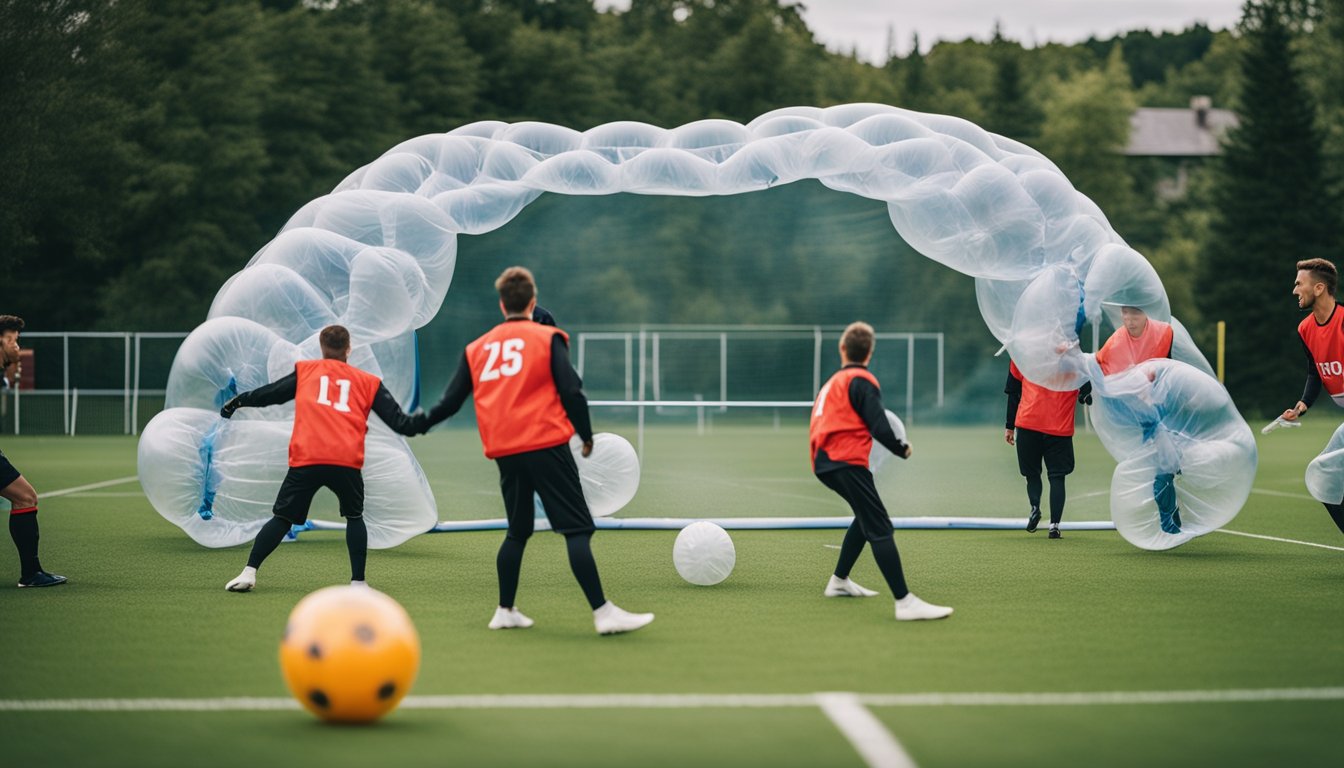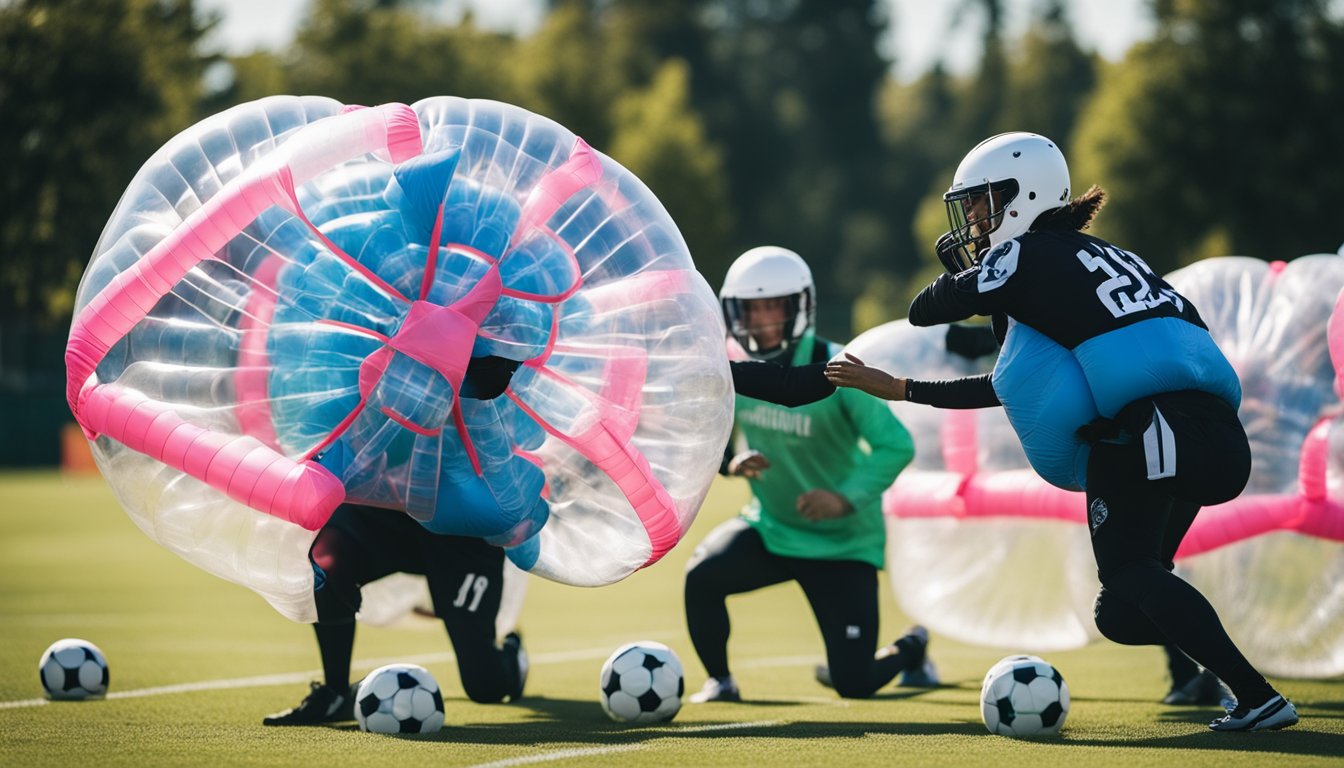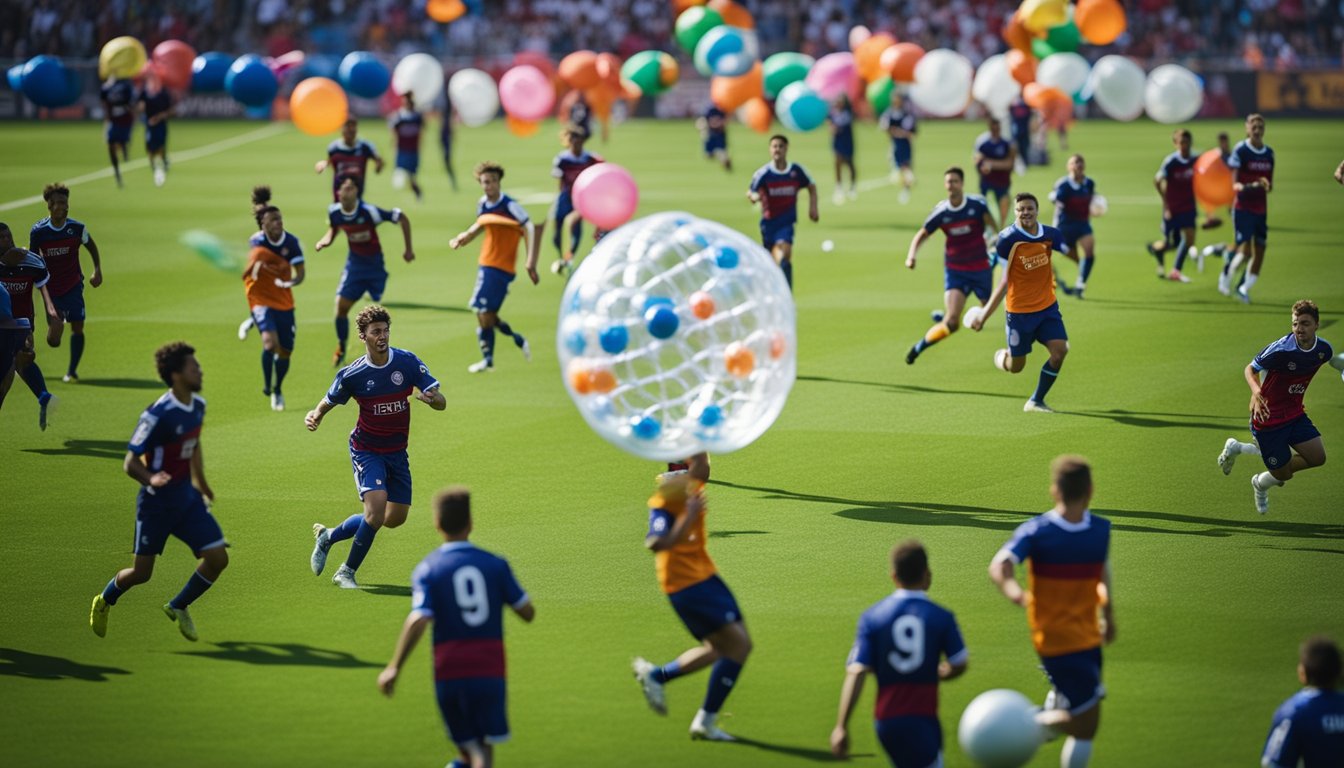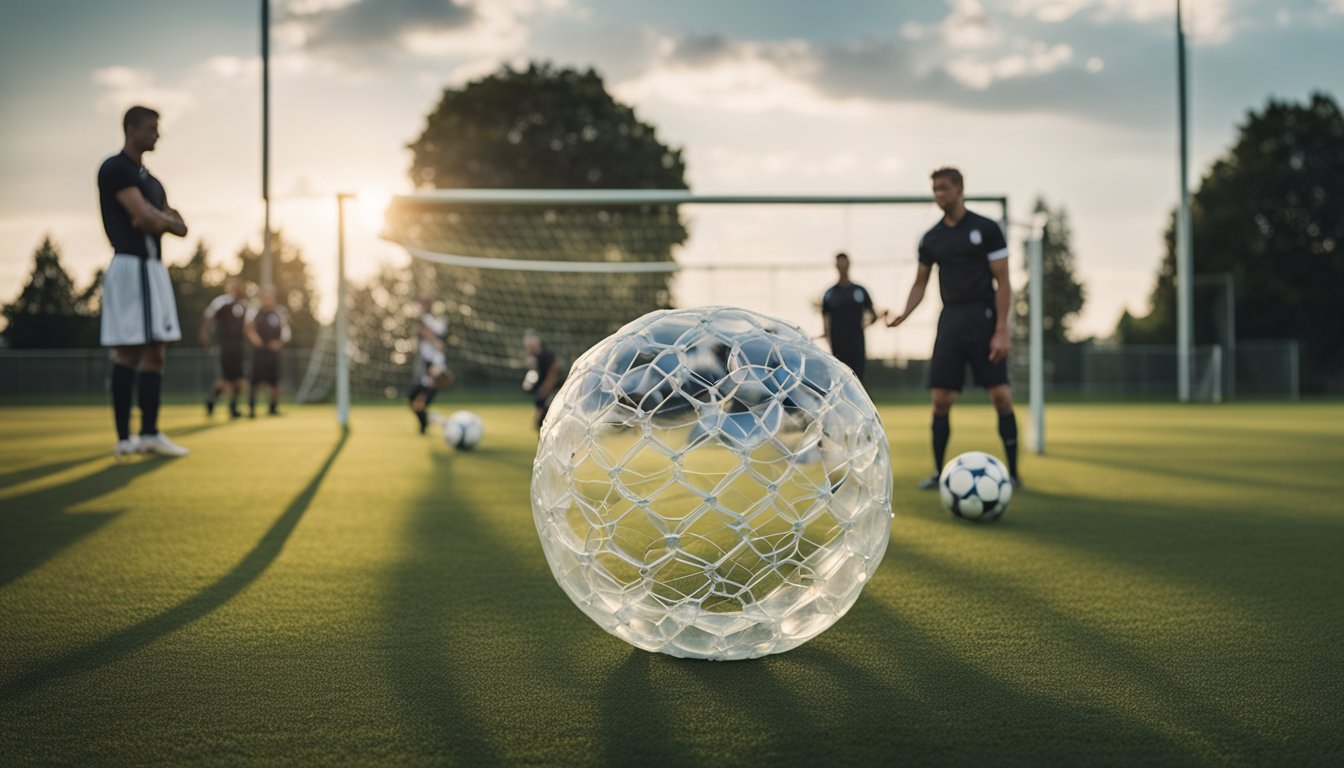Late updated: 05 Jul 2024 12:07
Written by: Emma Saunders
How To Set Up A Bubble Football League: A Step-by-Step Guide
Setting up a bubble football league can be an exciting venture that combines the thrill of the sport with the hilarity of playing in giant inflatable bubbles. To start, gather a group of enthusiastic players ready to dive into this fun-filled activity. Ensure you have access to a suitable venue, whether it's an indoor sports hall or an outdoor field, to accommodate the needs of the game.

You will need to invest in high-quality bubble suits, which are crucial for safety and enjoyment. Organising your league structure, including team formations and match schedules, ensures smooth operations and maximum fun. Arrange for referees or game organisers to oversee the matches and maintain fair play.
Promotion is key to attracting participants and building a loyal following. Use social media and local advertising to spread the word. Regular updates and engaging content keep the community excited and involved, ensuring your bubble football league becomes a popular and enduring activity.
Key Takeaways
- Gather players and secure a suitable venue
- Invest in quality bubble suits and organise league structure
- Promote the league through social media and local advertising
Setting Up Your Bubble Football League

Setting up a bubble football league requires thorough planning and attention to detail. We'll focus on understanding the sport, securing equipment, finding a venue, recruiting players, and designing the rules and format of the league.
Understanding the Sport of Bubble Football
Bubble football, also known as zorb football, is a variant of regular football where players wear inflated bubbles covering their upper body and head. This provides a fun and safe environment while adding an extra layer of unpredictability to the game. The typical match lasts between 60 and 90 minutes, with the main goal being to score more goals than the opposing team.
Securing the Right Equipment
The cornerstone of bubble football leagues is the bubble suits. These need to be durable and safe. We recommend purchasing high-quality bubbles that include safety features such as harnesses and handles. Some companies offer package deals including footballs designed for bubble play. Ensure you have spare bubbles on hand for replacements. Other essential items include goalposts, cones for marking the pitch, and first aid kits.
Finding a Suitable Venue
The venue is crucial for your bubble football league. This could be an indoor sports hall or an outdoor football pitch. In the UK, venues such as Powerleague and local community centres are great options. Make sure the venue has an even surface and ample space for running and bouncing. Indoor venues offer the advantage of weather predictability, while outdoor pitches can provide more space for large teams.
Recruiting Teams and Players
Recruiting players is vital for the success of your bubble football league. You can start by promoting the league on social media, community bulletin boards, and local sports clubs. Organise try-outs to assess players and form balanced teams. A typical team consists of 5-7 players, similar to a 5-a-side football match. Keep a roster of substitutes ready to cover injuries or absences. Encourage camaraderie and team spirit, as bubble football is as much about laughs and fun as it is about competition.
Designing the Rules and Format
The rules and format of your league will ensure fair play and fun. Common formats include round-robin tournaments or knockout stages. Matches should be timed, typically 30 minutes per half with a short break in between. Safety rules must be strictly enforced: no hitting from behind, and players must remain in their bubbles at all times. Consider adding unique elements like a "golden goal" rule for tiebreakers. Clearly document and distribute the rules to all participating teams.
Running the League

Effective management of a bubble football league requires attention to event organisation, player safety, promotion, and financial oversight. Each aspect is crucial for a successful and enjoyable experience for all participants.
Event Management and Operation
Organising events smoothly is vital for the success of our league. We should begin by scheduling matches, ensuring they don't clash with other local events.
Hiring competent staff to manage these events is equally important. This includes referees who understand both football and bubble football dynamics to keep games fair and enjoyable.
Proper scheduling also extends to booking venues. We ought to choose locations that can accommodate various events, from regular matches to exciting tournaments. Music and entertainment elements can enhance the atmosphere, making games more engaging for players and spectators alike.
Ensuring Player Safety and Fair Play
Player safety is paramount. To minimise injuries, we must provide high-quality zorb suits for everyone. Regular inspections of the gear ensure they remain in good condition.
We should enforce rules that prevent overly aggressive plays. Referees must keep a close eye on the game to ensure fair play and penalise any dangerous behaviour.
Training sessions before matches can help players understand the specific movements and limitations of bubble football. Educating participants about the potential risks and how to avoid them will further promote safety.
Promotion and Building a Fan Base
Building a strong fan base involves strategic promotion. Social media platforms are excellent for reaching out to potential fans. Posts showcasing exciting moments and player interviews can generate buzz.
We might also consider hosting demo events to attract interest. These could be arranged during local festivals or at popular community spaces.
Collaborations with local bars and businesses could offer promotional discounts or special deals for attending matches. This creates a community around our league and increases attendance figures. Engaging with fans through music, event photos, and live updates keeps them invested and excited.
Managing Finances
Financial management is critical for sustaining our league. We should develop a detailed budget that includes costs for equipment, venue hire, staff wages, and promotional activities. Transparent financial practices help ensure the league remains profitable and fair.
Sourcing affordable yet reliable zorb suits can reduce costs. We might also explore partnerships with local businesses for sponsorships, thereby generating additional revenue.
Ticket sales and merchandise, like branded apparel or sports equipment, can also contribute to our income. Keeping track of all financial transactions allows us to make informed decisions and maintain the league’s growth.
Frequently Asked Questions

To help you get started with your bubble football league, we have compiled answers to some common questions. These cover everything from necessary equipment to organising leagues and ensuring player safety.
What essential kit is required to participate in bubble football?
Participants need inflatable bubble suits, which protect the head and upper body. These suits should fit snugly to allow free movement of the legs. Comfortable, loose-fitting athletic wear and trainers are recommended. Additionally, you'll need a football, cones for marking goals and boundaries, and a sufficiently large field to play on.
Can you outline the rules for playing bubble football?
Bubble football rules are similar to traditional football but with a unique twist. Players are encased in large inflatable bubbles, making it harder to move and control the ball. Matches typically last 60 to 90 minutes split into halves or quarters, with the main objective being to score more goals than the opposing team. Standard rules apply, such as no handling the ball and no offside.
What safety precautions should be taken during zorb football matches?
Safety is paramount in zorb football. Inspect bubble suits for any damage before use. Ensure players are properly strapped in to prevent slipping inside the bubble. Conduct pre-game checks, including field inspections for hazards. Have first aid equipment on hand, and encourage players to stay hydrated and take breaks as needed.
How does one organise a bubble football league?
Start by gauging interest among potential players and teams. Secure a regular venue and obtain bubble suits. Create a schedule, including match fixtures and a points table. Promote the league through social media and local community boards. Consider establishing league rules and regulations, including safety guidelines and fair play principles.
What are the guidelines for setting up a bubble football field?
Choose a flat, open area free from obstacles and potential hazards. Mark the boundaries and goal areas using cones. Ensure the playing surface is suitable – grass or artificial turf is ideal. Keep a boundary fence or soft barriers at a distance to prevent injury from players being bumped out of the playing area.
How do you score and keep track of points in bubble football?
Scoring in bubble football remains the same as traditional football; each goal counts as one point. Use a scoreboard or a designated official to keep track of scores. At the end of each match, update the league's points table to reflect wins, draws, and losses. Regularly maintain records to ensure transparency and fairness.
